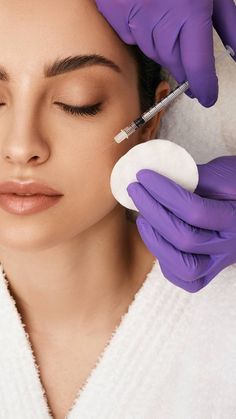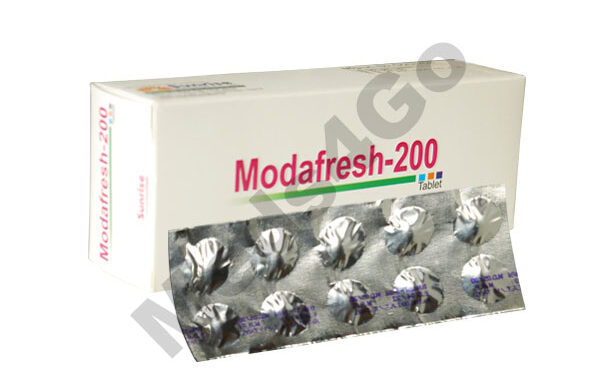What Effects Does Botulinum Have on Other Drugs?

Botulinum toxin, which is better known as “Botox,” is used for both medical and beauty purposes. Its main purpose is to treat wrinkles on the face and conditions like muscle spasticity, hyperhidrosis, and headaches. Knowing how it reacts with other drugs is important to keep patients safe and get the best results from therapy. An in-depth look at how Botulinum toxin interacts with other drugs is included in this guide. It covers the drug’s mechanisms of action, possible interactions, clinical implications, and best practices for healthcare workers.
We use Botox 100iu to enhance the appearance of moderate-to-severe forehead lines. Botox temporarily paralyzes the underlying muscles, reducing the appearance of facial wrinkles and fine lines. Adults use Botox to reduce the appearance of frown lines between their eyebrows, as well as to treat hyperhidrosis. It contains a botulinum toxin-type active substance.
Mechanism of Action of Botulinum Toxin
To comprehend the interactions between Botulinum toxin and other drugs, it is essential to understand how Botulinum toxin works. Botulinum toxin is a neurotoxin produced by the bacterium Clostridium botulinum. It exerts its effects by inhibiting the release of acetylcholine, a neurotransmitter responsible for muscle contraction, from nerve endings at the neuromuscular junction. This inhibition leads to temporary muscle paralysis in the targeted area.
The toxin achieves this by cleaving specific proteins involved in the docking and fusion of acetylcholine-containing vesicles with the nerve terminal membrane. The most commonly used serotypes in clinical practice are Botulinum toxin type A (BoNT-A) and type B (BoNT-B). The effects of BoNT-A typically last for three to six months, depending on the dose and the site of injection.
Potential Drug Interactions
Given its mechanism of action, Botulinum toxin can potentially interact with various medications. These interactions can either enhance or diminish the effects of Botulinum toxin or the concomitant drug, leading to therapeutic complications or adverse effects. Below are some key categories of drugs that may interact with Botulinum toxin:
1. Neuromuscular Blocking Agents
Neuromuscular blocking agents (NMBAs) are used during anesthesia to induce muscle relaxation. Since Botulinum toxin itself induces muscle paralysis by blocking acetylcholine release, concurrent use with NMBAs can potentiate the effects, leading to prolonged muscle paralysis. This interaction is particularly relevant during surgical procedures, where careful monitoring of neuromuscular function is essential.
Botox 50iu injections are shots that use a toxin to prevent a muscle from moving for a limited time. People often use these shots to smooth out facial wrinkles. Other conditions they treat include neck spasms, sweating, overactive bladders, and lazy eyes. Adults use Botox to cure hyperhidrosis and lessen the visibility of frown lines between their eyebrows. Its active ingredient is similar to that of botulinum toxin.
Common NMBAs include:
- Succinylcholine
- Rocuronium
- Vecuronium
2. Aminoglycoside Antibiotics
Aminoglycoside antibiotics, such as gentamicin, tobramycin, and amikacin, can enhance the effects of Botulinum toxin. These antibiotics impair neuromuscular transmission by inhibiting acetylcholine release, similar to the action of Botulinum toxin. Concurrent use may result in increased muscle weakness or prolonged paralysis.
3. Muscle Relaxants
Muscle relaxants, including antispasticity agents like baclofen and anticholinergic drugs such as cyclobenzaprine, can interact with Botulinum toxin. These drugs may enhance the muscle-relaxing effects of Botulinum toxin, leading to excessive weakness or difficulty in coordinating movements.
4. Cholinergic Drugs
Cholinergic drugs, which stimulate the parasympathetic nervous system, can counteract the effects of Botulinum toxin. These drugs include:
- Acetylcholinesterase inhibitors (e.g., donepezil, rivastigmine) used in the treatment of Alzheimer’s disease
- Cholinergic agonists (e.g., bethanechol) used to treat urinary retention and gastrointestinal dysmotility
Concurrent use of cholinergic drugs may reduce the efficacy of Botulinum toxin by increasing acetylcholine levels, thereby diminishing its muscle-relaxing effects.
5. Antibiotics and Antimicrobials
Certain antibiotics and antimicrobial agents, aside from aminoglycosides, can influence the effects of Botulinum toxin. For instance, quinolone antibiotics (e.g., ciprofloxacin) and tetracyclines (e.g., doxycycline) can enhance neuromuscular blockade. Additionally, metronidazole and lincosamides (e.g., clindamycin) have been reported to potentiate Botulinum toxin effects.
Clinical Implications
Understanding the potential interactions between Botulinum toxin and other drugs is critical for healthcare providers. These interactions can impact the safety and efficacy of treatments, necessitating careful patient assessment, monitoring, and management strategies.
1. Pre-treatment Assessment
Before administering Botulinum toxin, healthcare providers should conduct a thorough medical history and medication review. Identifying patients who are taking drugs that may interact with Botulinum toxin can help in planning appropriate dosages and intervals between treatments.
2. Monitoring and Management
Patients receiving Botulinum toxin, particularly those on interacting medications, should be closely monitored for signs of excessive muscle weakness, respiratory distress, or other adverse effects. Adjustments in medication dosages or treatment schedules may be necessary to mitigate interaction risks.
3. Patient Education
Educating patients about the potential interactions between Botulinum toxin and their medications is crucial. Patients should be advised to inform all their healthcare providers about their Botulinum toxin treatments and any changes in their medication regimen.
Case Studies and Research
Several case studies and research articles have highlighted the significance of drug interactions with Botulinum toxin. These studies provide valuable insights into the mechanisms, outcomes, and management strategies associated with such interactions.
Case Study 1: Aminoglycoside Interaction
A 45-year-old patient with chronic migraine was receiving Botulinum toxin type A injections. The patient was later prescribed gentamicin for a severe bacterial infection. Within a few days, the patient experienced generalized muscle weakness and difficulty swallowing. The interaction between Botulinum toxin and gentamicin was identified, and the gentamicin was discontinued. The patient’s symptoms gradually improved, highlighting the importance of recognizing aminoglycoside interactions.
Case Study 2: Neuromuscular Blocking Agent Interaction
A 60-year-old patient undergoing abdominal surgery was administered Botulinum toxin type A for chronic spasticity. During the surgery, rocuronium was used as a neuromuscular blocking agent. Postoperatively, the patient exhibited prolonged muscle paralysis, requiring extended ventilatory support. The interaction between Botulinum toxin and rocuronium was noted, emphasizing the need for careful perioperative management in patients receiving Botulinum toxin.
Best Practices for Healthcare Providers
To minimize the risks associated with Botulinum toxin and drug interactions, healthcare providers should adhere to best practices:
- Thorough Medical History: Obtain a comprehensive medical history, including current medications, before initiating Botulinum toxin treatment.
- Medication Review: Regularly review the patient’s medication list to identify potential interactions and adjust treatment plans accordingly.
- Patient Monitoring: Closely monitor patients for signs of excessive muscle weakness or other adverse effects, especially when interacting medications are involved.
- Interdisciplinary Communication: Ensure clear communication between all healthcare providers involved in the patient’s care to coordinate treatment and manage potential interactions effectively.
- Patient Education: Educate patients about the importance of reporting all medications and any changes in their treatment regimen to their healthcare providers.
Future Directions
As the use of Botulinum toxin continues to expand in both cosmetic and therapeutic settings, further research is needed to explore the full extent of its interactions with other drugs. Future studies should focus on:
- Identifying novel drug interactions with Botulinum toxin
- Understanding the underlying mechanisms of these interactions
- Developing guidelines for managing patients on complex medication regimens
- Investigating the long-term effects of Botulinum toxin in patients receiving interacting drugs
Conclusion
Botulinum toxin is a powerful medicine used for both beauty and therapeutic purposes, but when it mixes with other drugs, it can have big effects on how well patients do. Understanding these interactions is important for making sure patients are safe and getting the most out of care. By following best practices, healthcare professionals can handle possible situations well and give their patients high-quality care. More research and communication between fields will help us better understand and handle how Botulinum toxin and drugs interact, which will eventually lead to better patient care and treatment outcomes.

 Smile Brighter: Meet Canberra’s Top Dental Hygienists
Smile Brighter: Meet Canberra’s Top Dental Hygienists  Transform Your Comfort: Discover the Benefits of Cushions Lab Seat Cushions and Pillows
Transform Your Comfort: Discover the Benefits of Cushions Lab Seat Cushions and Pillows  Enhance Your Mental Clarity with Modafresh 200
Enhance Your Mental Clarity with Modafresh 200  List of Top 10 Neurologists in India 2024
List of Top 10 Neurologists in India 2024  Body Care Products Manufacturers: Providing Quality Products for Your Skincare Needs
Body Care Products Manufacturers: Providing Quality Products for Your Skincare Needs  The Journey to the Best Microblading in Dubai: A Client’s Perspective
The Journey to the Best Microblading in Dubai: A Client’s Perspective  Exploring London’s Best Butcher Shops
Exploring London’s Best Butcher Shops  Enhance Your Shop Appeal with Sydney’s Best Carpentry Services
Enhance Your Shop Appeal with Sydney’s Best Carpentry Services  A Detailed Look at the Features of the LEGO Technic Mars Crew Exploration Rover
A Detailed Look at the Features of the LEGO Technic Mars Crew Exploration Rover